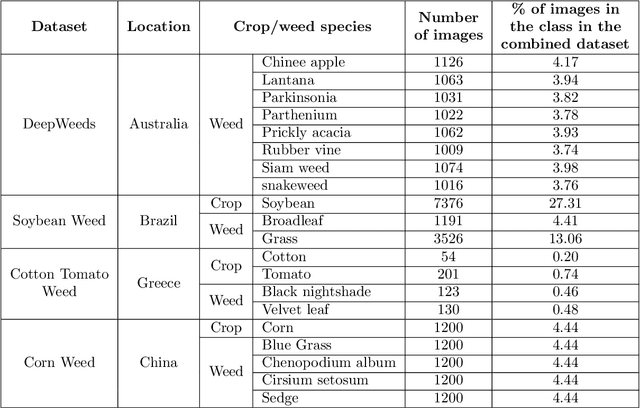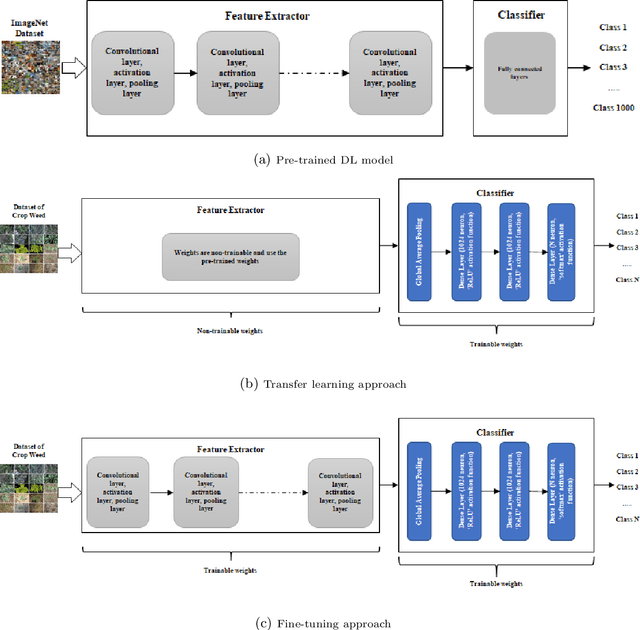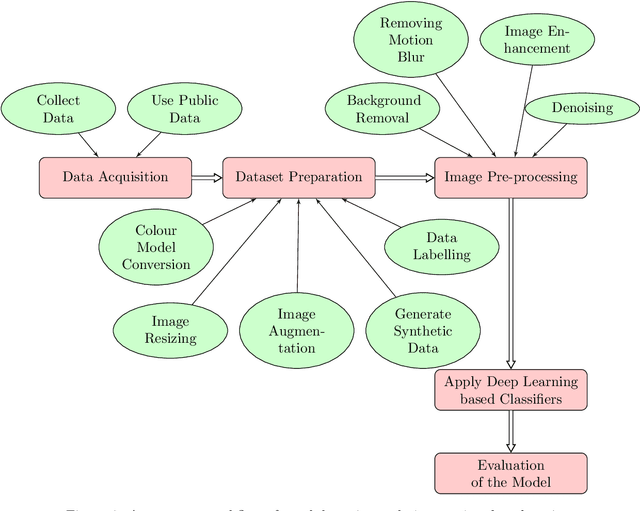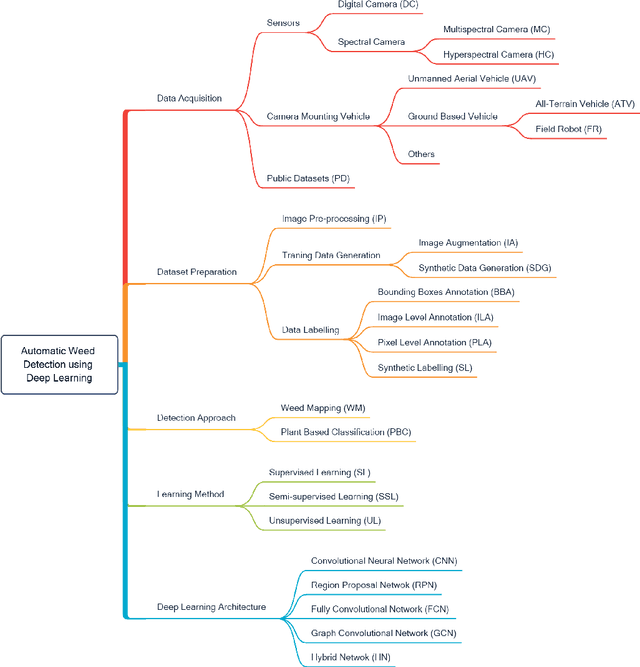A S M Mahmudul Hasan
Weed Recognition using Deep Learning Techniques on Class-imbalanced Imagery
Dec 15, 2021



Abstract:Most weed species can adversely impact agricultural productivity by competing for nutrients required by high-value crops. Manual weeding is not practical for large cropping areas. Many studies have been undertaken to develop automatic weed management systems for agricultural crops. In this process, one of the major tasks is to recognise the weeds from images. However, weed recognition is a challenging task. It is because weed and crop plants can be similar in colour, texture and shape which can be exacerbated further by the imaging conditions, geographic or weather conditions when the images are recorded. Advanced machine learning techniques can be used to recognise weeds from imagery. In this paper, we have investigated five state-of-the-art deep neural networks, namely VGG16, ResNet-50, Inception-V3, Inception-ResNet-v2 and MobileNetV2, and evaluated their performance for weed recognition. We have used several experimental settings and multiple dataset combinations. In particular, we constructed a large weed-crop dataset by combining several smaller datasets, mitigating class imbalance by data augmentation, and using this dataset in benchmarking the deep neural networks. We investigated the use of transfer learning techniques by preserving the pre-trained weights for extracting the features and fine-tuning them using the images of crop and weed datasets. We found that VGG16 performed better than others on small-scale datasets, while ResNet-50 performed better than other deep networks on the large combined dataset.
A Survey of Deep Learning Techniques for Weed Detection from Images
Mar 02, 2021



Abstract:The rapid advances in Deep Learning (DL) techniques have enabled rapid detection, localisation, and recognition of objects from images or videos. DL techniques are now being used in many applications related to agriculture and farming. Automatic detection and classification of weeds can play an important role in weed management and so contribute to higher yields. Weed detection in crops from imagery is inherently a challenging problem because both weeds and crops have similar colours ('green-on-green'), and their shapes and texture can be very similar at the growth phase. Also, a crop in one setting can be considered a weed in another. In addition to their detection, the recognition of specific weed species is essential so that targeted controlling mechanisms (e.g. appropriate herbicides and correct doses) can be applied. In this paper, we review existing deep learning-based weed detection and classification techniques. We cover the detailed literature on four main procedures, i.e., data acquisition, dataset preparation, DL techniques employed for detection, location and classification of weeds in crops, and evaluation metrics approaches. We found that most studies applied supervised learning techniques, they achieved high classification accuracy by fine-tuning pre-trained models on any plant dataset, and past experiments have already achieved high accuracy when a large amount of labelled data is available.
 Add to Chrome
Add to Chrome Add to Firefox
Add to Firefox Add to Edge
Add to Edge